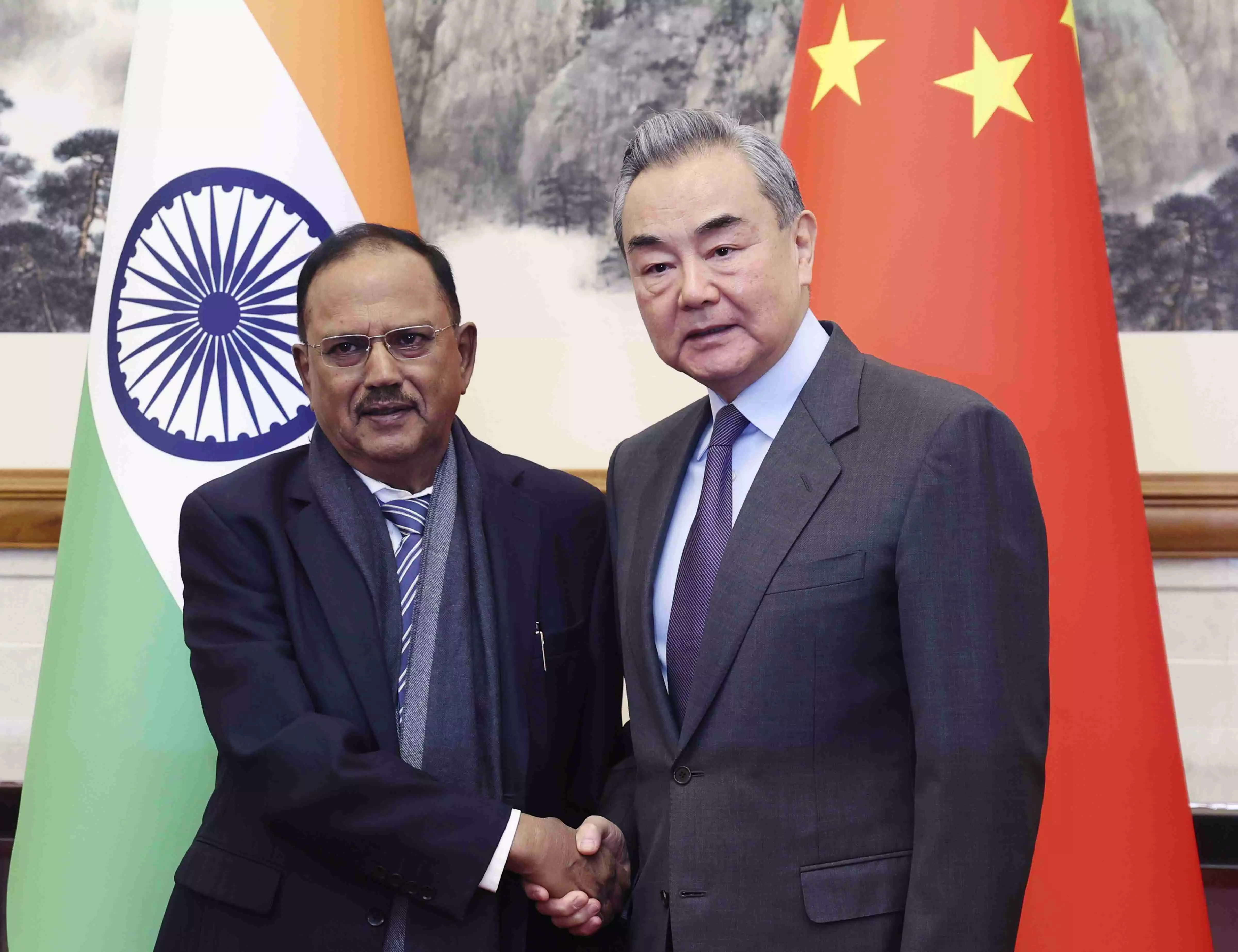A delicate path forward

The 23rd India-China Special Representatives Meeting between India’s National Security Adviser Ajit Doval and China’s Foreign Affairs Minister and senior Politburo member Wang Yi marks a cautious yet significant step towards stabilising bilateral relations. For two of the world’s largest and fastest-growing economies, cooperation is not a choice but a necessity. Over the past decade, relations between India and China have oscillated between phases of cooperation and confrontation. The Doklam standoff in 2017, and more critically, the Galwan Valley clashes of 2020, caused an unprecedented rupture in the mutual trust that had underpinned bilateral engagements. With the Line of Actual Control (LAC) becoming a site of heightened tensions, border negotiations have become the cornerstone of India-China diplomacy.
The 23rd Special Representatives Meeting is especially significant as it comes ahead of the upcoming Shanghai Cooperation Organisation (SCO) Summit, which China is set to host. India, a prominent member of the SCO, faces a dual challenge—navigating its troubled bilateral relationship with China while maintaining a constructive role within multilateral platforms. For China, as the host nation, ensuring India’s participation and projecting regional stability are critical to reinforcing the SCO’s relevance amid increasing regional rivalries. India and China’s willingness to sit across the table reflects their recognition of the risks inherent in prolonged military and diplomatic impasses. Both sides positively evaluated the October 2024 disengagement agreement, a breakthrough in resolving lingering tensions along certain sections of the LAC. This development signals progress, however incremental, towards reducing hostilities on the border. The reaffirmation of their commitment to resolving the broader boundary issue “in line with the political guiding principles established in 2005” also reopens a previously agreed-upon framework for negotiations. While no immediate resolution to the boundary dispute is anticipated, the emphasis on “mutually acceptable” solutions hints at a willingness to de-escalate confrontational postures.
At the heart of India-China engagements lies the need for peace and stability along the disputed border. The LAC remains a flashpoint, exacerbated by differences in perception and recurring incursions. Both sides have now agreed to refine border management protocols and strengthen confidence-building measures (CBMs). The emphasis on strengthening CBMs reflects lessons learned from past confrontations, where ambiguous border protocols and insufficient communication mechanisms led to deadly clashes. The agreement to involve the Working Mechanism for Consultation and Coordination on China-India Border Affairs (WMCC) in overseeing the implementation of these decisions adds institutional heft to the commitments made. If effectively utilised, this mechanism can facilitate the timely resolution of misunderstandings and reinforce the military disengagement process.
One of the most notable outcomes of the meeting is the agreement to revive the Kailash Mansarovar pilgrimage. This pilgrimage holds deep spiritual significance for Indian devotees and had been halted amid growing tensions. Its revival symbolises a return to people-to-people confidence-building, reflecting softer diplomacy alongside hard negotiations. Similarly, the decision to increase cooperation on cross-border river data sharing addresses long-standing Indian concerns regarding transparency and the management of transboundary water resources. Furthermore, the agreement to promote border trade through the Nathu La Pass aligns with the broader objective of restoring trust and fostering economic engagement.
However, restoring trust between India and China remains a monumental challenge. The Special Representatives Meeting notably addressed this challenge by emphasising the need to promote cooperation in economic, cultural, and trade areas. This reflects an understanding that sustained stability cannot rely solely on military disengagement but must also include comprehensive economic and cultural engagements. Both India and China, as leaders of the Global South, are acutely aware of their shared responsibilities in driving development across Asia, Africa, and Latin America. The meeting marks a significant step toward stabilising a relationship marred by distrust and confrontation. By evaluating progress on disengagement, refining border protocols, and reviving cultural and economic engagements, both nations have signalled their willingness to address outstanding issues through dialogue. The road ahead remains challenging, but the outcomes of this meeting offer a blueprint for constructive engagement. By prioritising peace, trust-building, and mutual development, India and China can chart a path toward a more stable and prosperous relationship—one that benefits not only their citizens but the broader region.



